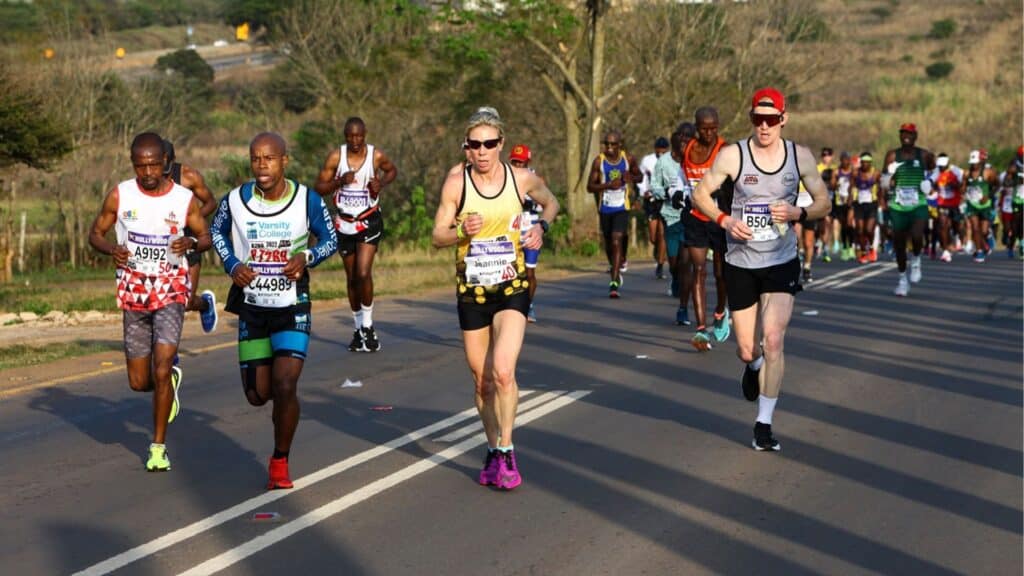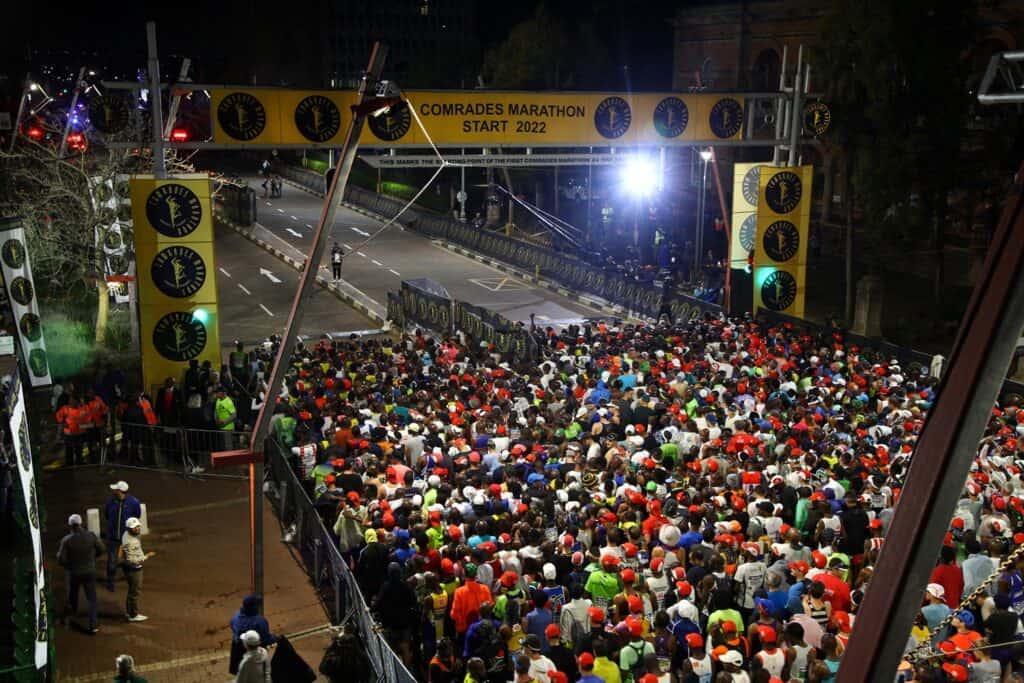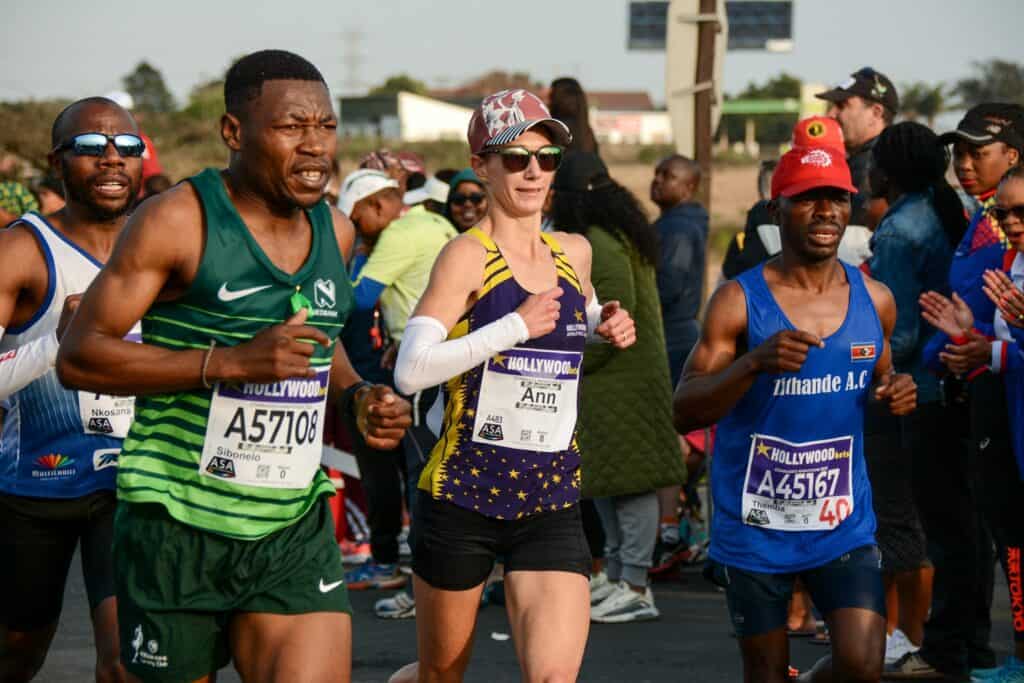Prepare for the Comrades Marathon with confidence and effectiveness by implementing valuable training insights and strategies.
This comprehensive article covers essential topics such as mastering hill repeats, choosing between time-based and distance-based training, incorporating treadmill runs, recovering from setbacks, and managing specific concerns like heel pain.
By understanding these key aspects, you can enhance your preparation, improve performance, and maximize your potential in the Comrades Marathon or any other endurance event.

Understanding Hill Repeats in Comrades Marathon Training Programs
Hill repeats are an essential component of training programs for endurance runners, particularly those preparing for marathons. These intense workouts help improve strength, speed, and endurance, but they are often misunderstood. In a recent conversation, the topic of hill repeats and their proper execution was discussed, shedding light on some common misconceptions.
A participant in a marathon training program sought clarification on the recommended approach for hill repeats. The question revolved around the duration of uphill and downhill running and the appropriate pace. The response provided valuable insights into the correct way to perform hill repeats.
It was emphasized that hill repeats in marathon training programs are often misinterpreted. The prescribed regimen involves running uphill at a challenging pace for a specific duration. The pace mentioned refers to the intensity at which participants should tackle the uphill portion of the repeats.
Regarding the descent, it was advised not to be overly concerned about the timing. Although participants may naturally slow down while running downhill, it is crucial not to take significantly longer than the prescribed time for the descent. The downhill phase serves as a form of active recovery, allowing runners to catch their breath and prepare for the subsequent uphill repetition. Striking a balance is important to ensure an effective workout.
Maintaining a reasonable time range for the descent was recommended. This range ensures that participants maintain an appropriate pace while allowing sufficient recovery before tackling the next uphill repetition.
Understanding the nuances of hill repeats is key to optimizing their benefits within marathon training programs. By focusing on the prescribed uphill effort and maintaining a controlled descent within the suggested time range, participants can effectively enhance their muscular strength, cardiovascular endurance, and overall performance on race day.
Remember, marathon training requires meticulous preparation and training. Following expert advice and clarifying any uncertainties can greatly contribute to a runner’s success. Embrace the challenge of hill repeats and use them as a powerful tool in your training arsenal, propelling you closer to achieving your goals in the marathon or any other endurance event.
This is a proven, science-backed Comrades training plan that shows you not only what training to do every day, but exactly what pace that training should be done at so that you avoid injury and ensure you’re not over- or under-trained for come race day.
The Benefits of Time-Based Training in Comrades Marathon Programs
In recent discussions surrounding Comrades Marathon training programs, an intriguing aspect that has emerged is the choice between time-based and distance-based approaches. Rather than prescribing specific distances to run, some programs emphasize training sessions based on a designated duration. This article aims to explore the reasoning behind time-based training in the context of Comrades Marathon preparation.
The initial focus of the conversations revolved around selecting the appropriate Comrades Marathon program tailored to individual needs. Subsequently, the discussion delved into the pacing guidelines for different training runs within these programs.
One noteworthy point of consideration is the distinction between time-based and distance-based training programs. For instance, instead of instructing runners to complete a specific distance, programs may suggest running for a specified duration on different days of the week. This approach prompts questions about the underlying rationale behind time-based training.
When examining the origins of Comrades Marathon training programs, it becomes apparent that the original thinking behind their development has undergone some evolution due to advancements in GPS tracking technology. Over a decade ago, coaches sought methods to prevent runners from pushing themselves too hard, as using heart rate training as a means of intensity control was not always feasible for many individuals due to cost constraints.
One observation made by coaches was that prescribing a fixed distance for training runs each week often led to a natural inclination to run faster over time. This tendency compromised the intended training intensity, particularly when runs were meant to be performed at an easy pace. The goal is to adhere to the prescribed power, rather than actively pursuing faster times.
This realization lies at the heart of the matter. With the advent of GPS devices, runners could easily challenge themselves to cover longer distances within a given time frame. However, this approach contradicts the desired training objectives.
The introduction of time-based Comrades Marathon training programs aims to reduce competitiveness during training sessions. By emphasizing a set duration for runs, regardless of intensity, participants are encouraged to maintain the intended pacing guidelines. The focus is on ensuring that runners perform at the desired intensity during each session, fostering a more balanced and effective training regimen.
Time-based training has proven to be highly effective over the years for those who have embraced this approach. However, it is worth noting that newer runners now have access to GPS and heart rate monitoring devices, which can aid in controlling training intensity. In such cases, specific pace guidelines or heart rate zones may be prescribed to regulate intensity.
As Comrades Marathon training programs continue to evolve, it is important to balance individual needs and available resources. Whether one opts for time-based or distance-based training, understanding the underlying principles empowers participants to make informed decisions and tailor their workouts effectively, ultimately maximizing their potential in the Comrades Marathon or any other endurance event.

Incorporating Treadmill Runs into Your Comrades Marathon Training
Recently, a Comrades Marathon runner raised a question regarding Comrades Marathon training. The inquiry focused on the possibility of substituting a couple of weekly training runs on the road with treadmill workouts, particularly for individuals with access to gym facilities. Concerns were raised about potential knee issues resulting from switching surfaces and whether treadmill runs should be simple training sessions or suitable for intervals.
I assured them that incorporating treadmill runs into their Comrades Marathon training routines is acceptable. While acknowledging slight differences between treadmills and outdoor running, it was emphasized that comfort on the treadmill can be achieved through consistent practice. The benefits were exemplified by mentioning successful athletes trained extensively on treadmills to achieve their goals. The treadmill can provide an ideal alternative for hill workouts or interval training, especially for runners residing in flat areas without easy access to diverse terrains.
The endorsement of treadmill runs as part of Comrades Marathon training highlights the flexibility and convenience they offer, especially for individuals with limited geographical advantages. By embracing treadmill workouts, runners can effectively simulate varying terrains and intensities, thereby enhancing their overall training experience and preparing themselves for the demands of the race.
In conclusion, for those considering incorporating treadmill runs into their Comrades Marathon training, there is no need to hesitate. Embrace this tool as a valuable asset in your training arsenal and make the most of its benefits in achieving your race-day goals.
Rejoining the Comrades Marathon Training Journey: Recovering and Planning Ahead
An avid participant of the Comrades Marathon, a runner sought guidance regarding their training journey. After completing the marathon, they faced challenges during the Cape Town Marathon and decided to take a break until the end of November. The runner expressed interest in joining the Comrades Marathon Bronze medal training program and sought advice on the best approach.
Addressing the runner’s disappointment in the Cape Town Marathon, the podcast discussed the demanding course conditions that hindered many participants from achieving their personal bests. Additionally, the physical strain experienced even after completing the race contributed to a sense of demotivation. The importance of taking a break and allowing for proper recovery was emphasized as an integral part of the training process.
Regarding rejoining the Comrades Marathon Bronze medal training program, the podcast suggested aligning the return with the program’s rest period. This approach would enable a gradual integration back into training and potentially provide a slight advantage before the program caught up. By adopting this strategy, the runner would be able to resume their training journey and steadily progress towards their goals.
In conclusion, the runner’s decision to take a break following the Cape Town Marathon and their plan to rejoin the Comrades Marathon Bronze medal training program highlights the significance of recognizing personal needs during the pursuit of endurance goals. By allowing for adequate recovery time and strategically integrating back into the training program, the runner enhances their chances of a successful and fulfilling return to the Comrades Marathon.

Overcoming Challenges in Comrades Marathon Training: Dealing with Heel Pain
A Comrades Marathon novice raised concerns about persistent heel pain and sought advice on preventing it from becoming a severe injury.
The runner, an active 51-year-old, had been consistently training and had successfully increased his weekly mileage. However, he experienced soreness in his knees and hamstrings after pushing himself during runs, and his right heel became increasingly painful.
We suggested several possible reasons for the heel pain.
One explanation could be related to insufficient cushioning in the runner’s shoes, especially if they were designed for forefoot striking rather than heel striking.
In such cases, bruising of the fatty padding around the heel might occur.
Another possibility is insertional tendonitis irritation from the Achilles tendon, which could be aggravated by running in “natural” or minimalist shoes. Lastly, the pain could be linked to plantar fasciitis, possibly caused by excessive activity or foot weakness.
To alleviate the discomfort and promote healing, we advised the runner to try ice massage by rolling the foot over a frozen juice bottle, targeting both the plantar fascia and the heel.
It was also recommended to reduce the weekly mileage slightly, as exceeding the optimal training load might have contributed to the pain. If the pain subsided and significant healing occurred over the next two to three weeks with reduced mileage, the runner could gradually increase their training again.
However, if the pain persisted or worsened, seeking medical advice from a sports doctor was encouraged to rule out any serious issues.
In summary, addressing heel pain during Comrades Marathon training requires careful attention and appropriate measures.
By considering possible causes, adjusting training intensity, and implementing self-care techniques like ice massage, runners can effectively manage and prevent potential injuries. Prioritizing proper recovery and seeking medical guidance when necessary are essential steps in ensuring a successful and injury-free journey to the Comrades Marathon finish line.
Running an Ultra Marathon Before The Comrades Marathon
In a recent discussion, a participant sought advice on the upcoming marathon and ultra races while following the Comrades Marathon program. The individual shared that life circumstances had disrupted their training in the past two months, leading to missed gym sessions. Seeking guidance, they inquired about incorporating a comfortable, motivating marathon into their schedule and the possibility of squeezing in an ultra event.
We reassured the participant that they were on track with their current training plan. Emphasizing that participating in an ultra was not mandatory and largely relied on mental preparation, we highlighted the advantages of the long-distance experience but acknowledged that it wasn’t essential for a successful race completion. However, we recommended extending the planned marathon by an additional 5-6 kilometers to surpass the standard marathon distance and gain valuable experience.
The participant’s target time of 4:45 for the marathon was viewed as a confidence booster. We advised caution, suggesting the participant avoid racing the marathon and instead focus on maintaining a challenging yet manageable pace. Regarding the tapering phase, we suggested reducing mileage during the week of the marathon while incorporating shorter runs to achieve a balanced taper and limit any significant impact on the overall training.
As the participant prepares for their upcoming races, they can take comfort in the expert advice received and proceed with confidence. With careful planning, strategic pacing, and a well-balanced taper, they will be well-equipped to overcome challenges and achieve their goals in the Comrades Marathon program.



Comments are closed.